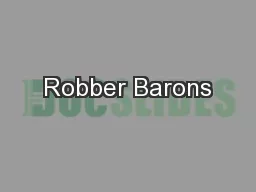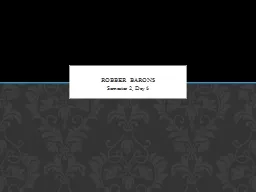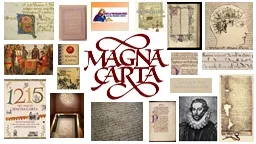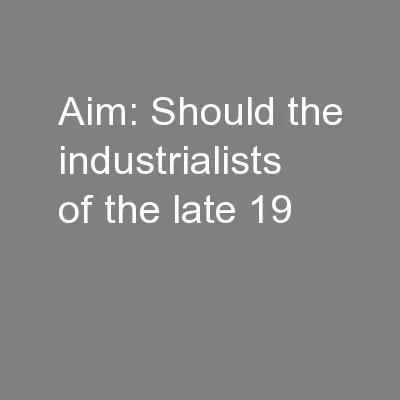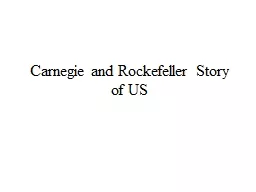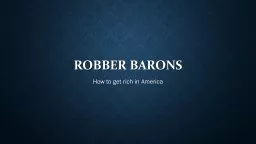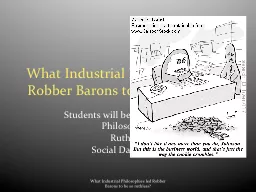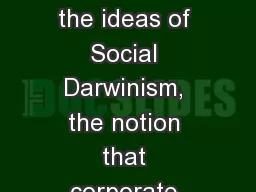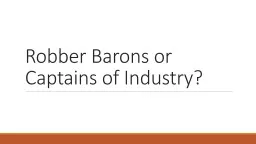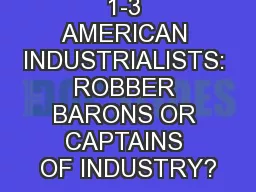PPT-Robber Barons
Author : phoebe-click | Published Date : 2015-12-12
or Captains of Industry Panic of 1893 corporation abuses mismanagement over building and competition pushed many railroad to brink of bankruptcy panic was worst
Presentation Embed Code
Download Presentation
Download Presentation The PPT/PDF document "Robber Barons" is the property of its rightful owner. Permission is granted to download and print the materials on this website for personal, non-commercial use only, and to display it on your personal computer provided you do not modify the materials and that you retain all copyright notices contained in the materials. By downloading content from our website, you accept the terms of this agreement.
Robber Barons: Transcript
Download Rules Of Document
"Robber Barons"The content belongs to its owner. You may download and print it for personal use, without modification, and keep all copyright notices. By downloading, you agree to these terms.
Related Documents

